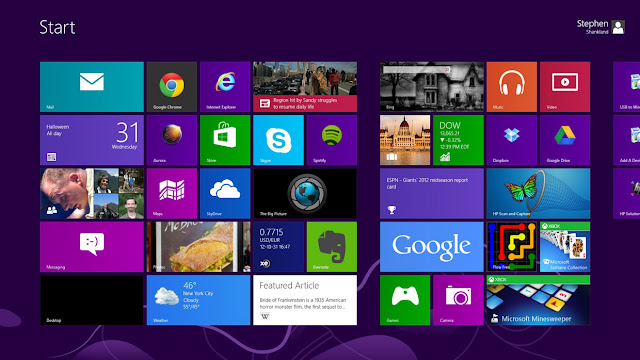How OS works??
Operating systems control different computer processes, such as running a
spreadsheet program or accessing information from the computer's memory. One
important process is interpreting commands, enabling the user to communicate
with the computer. Some command interpreters are text oriented, requiring
commands to be typed in or to be selected via function keys on a keyboard.
Other command interpreters use graphics and let the user communicate by
pointing and clicking on an icon, an on-screen picture that represents a
specific command. Beginners generally find graphically oriented interpreters
easier to use, but many experienced computer users prefer text-oriented command
interpreters.
Operating systems are either single-tasking or multitasking. The more primitive single-tasking operating systems can run only one process at a time. For instance, when the computer is printing a document, it cannot start another process or respond to new commands until the printing is completed.
All modern operating systems are multitasking and can run several processes simultaneously. In most computers, however, there is only one central processing unit (CPU; the computational and control unit of the computer), so a multitasking OS creates the illusion of several processes running simultaneously on the CPU. The most common mechanism used to create this illusion is time-slice multitasking, whereby each process is run individually for a fixed period of time. If the process is not completed within the allotted time, it is suspended and another process is run. This exchanging of processes is called context switching. The OS performs the “bookkeeping” that preserves a suspended process. It also has a mechanism, called a scheduler, that determines which process will be run next. The scheduler runs short processes quickly to minimize perceptible delay. The processes appear to run simultaneously because the user's sense of time is much slower than the processing speed of the computer.
Operating systems can use a technique known as virtual memory to run processes that require more main memory than is actually available. To implement this technique, space on the hard drive is used to mimic the extra memory needed. Accessing the hard drive is more time-consuming than accessing main memory, however, so performance of the computer slows.
FUTURE TECHNOLOGY
Research is also being conducted that would replace the keyboard with a means of using voice or handwriting for input. Currently these types of input are imprecise because people pronounce and write words very differently, making it difficult for a computer to recognize the same input from different users. However, advances in this field have led to systems that can recognize a small number of words spoken by a variety of people. In addition, software has been developed that can be taught to recognize an individual's handwriting.




No comments:
Post a Comment